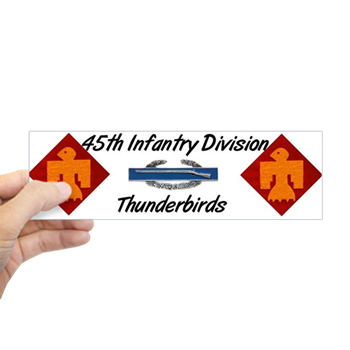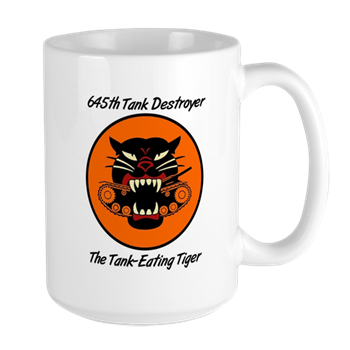157th Combat History |



Click
here for a printable version.
The regiment was first committed to battle on 10 July 1943, in the assault wave of the landings on the island of Sicily, and suffered its first casualties there. Though enemy resistance was light, twenty-seven men were drowned in the landings. Among the first to die in battle were four resolute machine gunners that held their positions unto death to keep a German counterattack from overrunning a withdrawing rifle company. The regiment conducted another landing on Sicily, in an operation to leapfrog up the coast to by-pass heavy defenses. In debarking ship in one such operation a landing craft loaded with men broke free from the ship's davits and dropped on top of another loaded landing craft that had come alongside the ship: twenty-one men were killed in this single mishap. Regimental casualties on Sicily numbered close to 200.
Next, the regiment participated in the assault landings at Salerno, Italy, coming ashore the second day, 10 September 1943. They were immediately involved in fighting to break out of the beachhead, battling at such places as the Tobacco Warehouse (which changed hands four times on 12 September), Persamo, and the Sele River. The regiment's 1st Battalion was hit by enemy tanks on 13 September and was surrounded and bypassed by the Germans, who moved toward the ocean, threatening the whole of the beachhead. Two of the division's artillery battalions, the 189th and the 158th stood in the way, stopped the Germans and saved the beachhead -- firing 3,650 rounds in a single day. The German defense was defeated on 17 September, and the enemy wave began to withdraw -- followed aggressively by the Americans. On 23 September Corporal James D. Slaton of K Company earned the regiment's first Medal of Honor by wiping out three German machine gun nests with rifle fire, hand grenades, and his bayonet. The next day the Regimental Commander's jeep ran over a German mine, and Colonel Ankcorn lost a leg. On 28 September 2nd and 3rd Battalions were bombed by American planes. On 6 October 1943 E Company was hit hard by an enemy counterattack, and was reduced to 45 men. Showers were arranged and clean clothes were issued to the men on 19 October -- the first such opportunities in more than forty days. With only brief spell in reserve, the regiment continued to battle the Germans, the mountains, and the cold until relieved from the line on 10 January 1944 after 72 days of continuous combat.
When the regiment came off the line in January 1944, it was moved to a rest area
near Naples for refitting and training for participation in the assault landings
planned farther up the Italian coast -- at Anzio. The men came ashore after the
initial landings, and moved into the defensive line on 30 January and 1 February
1944. On 7 February 1944 3rd Battalion was hit hard by a German night attack,
directed principally by L Company. The GI line held, but there were terrible casualties,
including the Battalion Commander, who was killed. By early the next morning the
German attack had bypassed L Company and fighting was going on deep behind the
American lines. L Company withdrew and 3rd Battalion headquarters withdrew as
well, under direct enemy fire. Once again, a beachhead was in danger. Artillery
rained down on the Germans -- 24,000 rounds in a single 2 1/2 hour period and
3rd Battalion's own mortars poured out an incredible 9,200 rounds. The German
attack was stopped. Once the lines were straightened and reorganized, the regiment
was relieved by British forces and moved to the center of the Allied line, taking
positions forward of the "overpass," along the Albano-Anzio Highway.
The very next day the Germans launched a tank-supported attack against the regiment.
E Company was destroyed, and G Company held its ground only after the Company
Commander called artillery fire on his own positions. The 2nd Battalion Adjutant,
Captain Felix L. Sparks, was sent forward to take command of the remnants of E
Company, but the German attacks were so fierce and concentrated -- the Germans
drove right up to the foxhole line in tanks and fired the main guns directly into
the holes -- that only Sparks and two men survived from the company. This level
of combat continued for the next several days; there was hand-to-hand combat and
at least one more incidence of calls for artillery fire on friendly positions.
In the end, the regiment held, but at a terrible cost: 3rd Battalion lost 324
men (68 were left in I Company which landed with 165 men); 2nd Battalion, which
had landed with 713 men and 38 officers, had only 162 men and 15 officers still
on their feet. Things were quieter from that day -- but still quite deadly --
until the breakout for Rome, which started on 23 May 1944.
The regiment
was in the forefront of the kickoff for Rome, with 1st and 3rd Battalions in the
attack. The regiment's second Medal
of Honor was earned on this day by an NCO platoon leader in I Company, Technical
Sergeant Van T. Barfoot, who destroyed three machine gun positions, knocked out
a German tank and shot down its escaping crew, blew up a German artillery piece,
and then escorted two wounded men 1,700 yards to safety. (I have had the honor
of shaking this fine man's hand.) One platoon of B Company, trapped in a ditch,
was virtually wiped out by German tanks. The attack continued down the Cisterna-Campoleone
Road, and on 27 May 1944 a German counterattack again decimated the reconstituted
E Company, driving the men into a minefield, where the commander and all but one
of the officer and NCO leaders became casualties. The next day I Company was hit
and overrun; two platoons and the commander were lost. When the regiment was relieved
on 29 May, many of the stragglers sheltered under a large ledge, which was toppled
by artillery fire and many men were killed and wounded -- 160 were evacuated and
several were left buried under the collapsed ledge. On 3 June 1944, the regiment
was relieved from the line and moved to a rest area.
During the period 4 June - 15 August 1944, the regiment rested and conducted training
for the landing in southern France, which came on the latter date. Mercifully,
there was negligible resistance from the enemy; the regiment captured 350 Germans
and suffered only seven men wounded. Then began the footrace to keep up with a
German Army retreating towards its own border, and the regiment participated in
the rapid push up the Valley of Rhone, meeting stiff resistance here and there,
but advancing rapidly. On 29 August 1944, the regiment was relieved from the line
and moved to a rest area, where it stayed until returned to combat on 11 September
and attacked in the Belfort Gap, France. The Regiment's 3rd
Medal of Honor was earned on 14 September 1944 near Grammont, France, by a
lieutenant platoon leader, Almond E. Fisher, who led his platoon in a pre-dawn
attack against heavy resistance. Fisher personally knocked out five automatic
weapons and, although wounded in both feet, insisted on remaining in command until
his platoon's position was consolidated and secured. Fighting, and progress, continued
until the regiment transitioned to the defense on 3 October 1944, but not for
long. On 25 October, the regiment resumed attacking and on this first day K and
L Companies got involved in a bayonet fight in the woods near Housseras. Bitter
fighting, against strong resistance and horrible weather continued until the regiment
was withdrawn to a rest area on 8 November 1944.
On 25 November, the
regiment returned to combat -- and the attack. The men pushed through the Alsatian
Plain toward the German border, and on 12 December 1944, one day short of the
division's 365th day in combat, the 158th Field Artillery Battalion fired the
division's first shells into German territory. On 16 December, A Company crossed
the border into Germany and the rest of the regiment followed within hours. But
the progress was to stop, on order from higher headquarters. Far to the north,
the Germans had launched the Ardennes Offensive, known to history as The Battle
of the Bulge. Allied forces in the south were ordered to cease offensive operations,
back up to more defensive positions just inside France, and began occupying the
Maginot Line. Just as the regiment was withdrawing, the Germans initiated Operation
Northwind by launching strong attacks in the south and penetrating the left flank
of the 45th Division. The regiment was alerted to move to this area and restore
the ruptured American line, and began moving on 11 January 1945. Between this
time and 20 January 1945, the regiment became embroiled in a hot action near Reipertswiller,
which saw one of its battalions (3rd) and companies from each of the 1st and 2nd
Battalions surrounded and overcome by a fresh SS Mountain Infantry Regiment. When
the fight ended on 20 January, 158 GIs had been killed in action, 350 had been
wounded or injured and evacuated and 426 (many of whom were wounded) were captured.
The whole US corps withdrew even further. From 21 January until 13 March, the
regiment occupied defensive positions and rotated into a rest area while the unit
was rebuilt and trained for the planned attack to break through the Siegfried
Line.
The regiment moved out of the rest areas on 13 March 1945 and moved
to staging points for the Seventh Army offensive, which kicked off on 15 March.
The 157th Infantry Regiment was once again in the attack. The 4th
Medal of Honor was earned on 18 March while breaching the Sigfried line, by
Edward G. Wilkin. By 20 March, the Line had been penetrated, the Germans began
a withdrawal to the Rhine River, and the regiment pursued them at great speed.
Its sister regiments, the 179th and 180th, conducted assault crossings of the
Rhine on 26 March. The next day, the regiment crossed the Main on a RR bridge
and found itself involved in close-quarters fighting against bitterly resisting
SS troops in the city; all three battalions were committed to the attack. The
fierce fighting, including a pitched battle for the town castle, went on until
the city fell on 3 April 1945. The men were stunned to find German soldiers hanging
from light poles with signs around their necks saying, "I wanted to desert,"
or "I am a defeatist."
After a period of nine days reorganizing in division reserve, the regiment once again was committed to the attack -- toward Nurnberg, and Munich, the birthplace of Nazism. Although there were pockets of fierce resistance, Nurnberg fell in four days. Once again the regiment paused briefly to reorganize, and then on 22 April 1945, it resumed the attack. Reaching the Danube River at Marxheim on 25 April 1945, the regiment conducted an assault crossing under heavy artillery and small arms fire. On 29 April 1945, 3rd Battalion liberated the concentration camp at Dachau, and at the close of the day regimental units were in the outskirts of Munich, which fell the next day, 30 April 1945, the last day of combat for the regiment.
In its 667 days overseas, the regiment was in battle for about 470 days. In this time soldiers of the regiment were awarded 4 Medals of Honor, 20 Distinguished Service Crosses, 376 Silver Stars, 1,054 Bronze Stars, and 1,694 Purple Hearts.
But
to the hero, when his sword
Has won the battle for the free,
Thy voice
sounds like a prophet's word,
And in its hollow tones are heard
The thanks
of millions yet to be.
--Fitz-Green Halleck
Many thanks to LTC Hugh Foster III (Ret.) for allowing us to use this historical overview. Hugh spent many hours compiling this information from numerous sources.
last revision